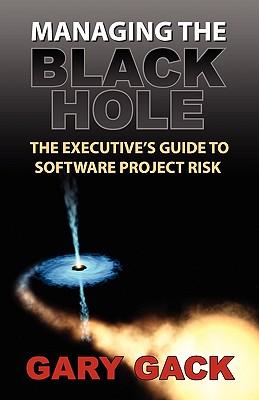More and more businesses and government agencies are finding software and IT to be crucial to their success and efficiency. This increased reliance is surfacing many shortcomings in the way software projects are managed.
Software is central to running any business effectively - it's just as important to success as marketing, sales, finance, and operations. This book provides an MBA level of understanding of the key dynamics of software projects and will position executives to improve outcomes. Managing the "Black Hole" is about management, not technology.
Software projects are risky - failures are common. Less than 1/3 of all software projects (purchased or built) are fully successful (on-time, on-budget, with all intended features and functions). The average software project overruns its budget by around 50% and schedule by around 80%. The average project delivers less than 70% of planned features and functions.
Software projects are extremely wasteful - in an average organization only 30-40% of total software cost results in "value-added" - best in class organizations (less than 15%) achieve twice as much value add - 100% more 'bang for the buck'.
This book examines the underlying root causes of failures - the "Seven Deadly Sins" and provides a non-technical introduction to a range of proven remedies - the "Five Redeeming Virtues." The ideas in this book will enable your organization to join the elite few who have taken these lessons to heart.
Leaving the solution to these problems solely in the hands of IT specialists has not proven a successful strategy - top management understanding and engagement are required to improve outcomes!
"Managing the Black Hole provides a substantive yet refreshingly succinct tour of software project risks and remedies. This book explains the most important software project issues without 'geek-speak', using examples and metaphor readily comprehensible to those without extensive technical backgrounds. Gary has captured just the right level of depth and detail for today's busy executives, both inside and outside IT. Anyone dealing with risky software projects, whether 'buying' or 'building', will benefit from this book." -Tony Salvaggio, CEO, Computer Aid, Inc.
About the Author
Gary Gack is an MBA from the Wharton School, a Six Sigma Black Belt, and an ASQ-certified software quality engineer. He provides consulting, training and coaching related to business and software/IT process improvement, with emphasis on "best of breed" integration of proven best practices and models. His primary focus and interest is in helping organizations improve business performance by more effective management of the interface between general managers and software and IT. By working on both sides of the "technology divide" he has helped reduce failures, increase productivity and quality, reduce waste, and control risk.
